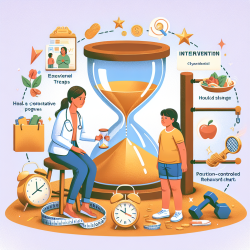As professionals dedicated to supporting the development and well-being of individuals with auditory challenges, staying abreast of the latest research findings is crucial. A pivotal study, "The Onset and Development of Auditory Function: Contributions of evoked potential studies" by Jos J. Eggermont, Ph.D., offers invaluable insights that can significantly enhance our therapy practices and outcomes.
This comprehensive review delves into the maturation of auditory function from infancy, highlighting the critical role of auditory evoked potentials (AEPs) in assessing and understanding auditory development. One of the key takeaways is the potential utility of AEPs in early identification and intervention for infants at risk of auditory or language dysfunction.
For practitioners, implementing the outcomes of this research could mean refining screening protocols to more accurately predict and address developmental outcomes. The study suggests that while newborn Auditory Brainstem Response (ABR) to clicks may not yield high predictive validity for developmental outcomes due to the rigid maturation of the response, it remains a valuable tool for early screening. Moreover, the discrepancies in predictive validity across studies underscore the necessity for additional research in this area.
However, the research also indicates that ABR may be more effective in predicting general CNS dysfunction, suggesting its utility as a screening device for broader developmental delays or impairments. This insight can guide therapists in advocating for and implementing more comprehensive screening processes, potentially leading to earlier and more targeted interventions.
The correlation—or lack thereof—between ABR and behavioral audiometry in predicting hearing outcomes highlights an area where further research is needed. For therapists, this underscores the importance of a multi-faceted approach to auditory screening and intervention, one that includes but is not limited to ABR screening.
Integrating the findings from Eggermont's review into practice involves a balance of leveraging ABR for its strengths in early screening while remaining vigilant about its limitations. Therapists can use this knowledge to advocate for additional measures and research that aim to enhance the predictive validity of newborn ABR, thereby improving early intervention strategies.
Ultimately, this research supports the notion that early identification and intervention are key to addressing auditory and language dysfunction. As therapists, it's our role to continuously seek out and apply evidence-based practices that can improve the lives of those we serve. By incorporating the insights from Eggermont's study into our work, we can contribute to a more nuanced understanding and approach to auditory development challenges.
To further explore the implications of this research for auditory therapy and intervention, Peer Commentary on "The Onset and Development of Auditory Function: Contributions of evoked potential studies" by Jos J. Eggermont, Ph.D. is an essential read for any practitioner committed to advancing their skills and knowledge in the field.










